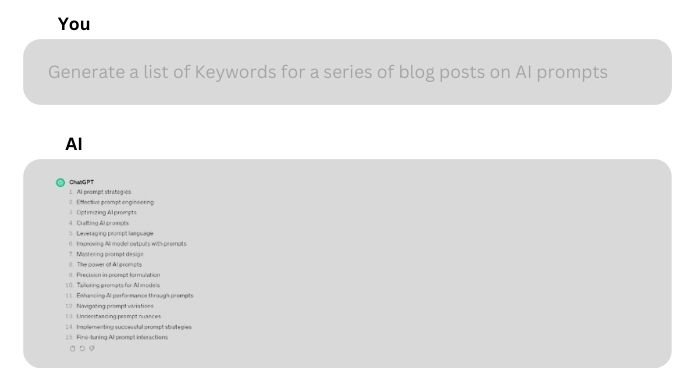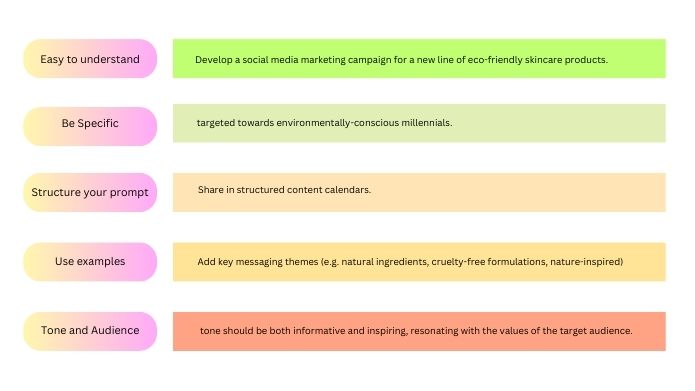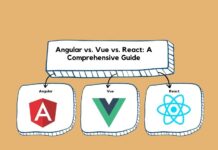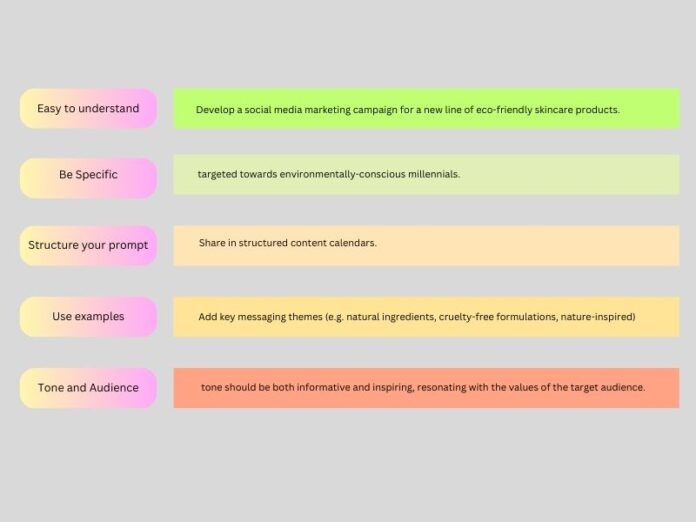Discover the transformative potential of AI through expert prompt engineering strategies and learn the importance of AI prompts to transform your output. Let’s jump into the world of prompting and whip up some awesome AI interactions.
The pivotal element in maximizing the capabilities of AI is intricately linked to the effectiveness of the prompt. It plays a crucial role in Content Creation, like a well designed and specific prompt can steer the AI model to produce a quality output.
By Mastering this practice of designing inputs for AI tools (i.e AI Prompt ), anyone can turn a blank canvas into a masterpiece. Prompts acts as crucial catalyst for steering the model towards desired outcomes like set the tone, style, format and enhance AI model performance.
What are “Prompts” and How Do They Work?
The Query or sentence you enter in Generative AI tool is called “prompts”. There is immense power in crafting accurate prompts that significantly enhance the accuracy of AI-generated responses and the model’s capacity to generalize to new data.
Prompts are used to interact with AI model, it can be sentence or a query. These are very specific instructions or cues to obtain a desired output from the AI model like Chat GPT.
Now key to generate a desired output is to give clear instructions “AI prompt” — nailing your prompt is crucial.
Let’s consider a example where you are training your new assistant to help with your job.
For this training, you set up a clear instruction, Goals and roadmap to do their job correctly. But here you start from scratch and guide them step-by-step to make them effective. Similarly, AI models depend on the clarity and specificity of the prompt given to generate response.

Factors To Consider In Writing Prompts
When crafting AI prompts, emphasize clarity, conciseness, and specificity in your input. This is why we refer to it as “The Art of Prompt Engineering” — crafting an effective prompt is an art that demands creativity, intuition, and a good understanding of language.
Keep these principles in mind as you shape your prompts:
1. Easy to understand
Use plain and simple language to craft your instructions so the AI can quickly grasp your intent. As Your instructions are foundation of the prompt, guiding its path with clarity and purpose.
It tells the model what you want it to do. For example, “Can you provide me with some ideas for blog posts about [topic]?”.
2. Be Specific
Clearly state your input in detailed information that helps the model to generate the accurate output.
3. Structure your prompt
Structure your prompt in a logical and organized way, ensuring that it is easy for the AI to understand and execute the instructions provided, resulting in the desired outcome.
4. Use examples
Using examples in prompts helps in generating accurate output by providing the AI model with clear and specific guidance on the desired outcome. Examples serve as reference points for the AI, helping it understand the context, structure, and nuances of the task at hand.
5. Tone and Audience
Considering tone and audience in prompts matter to produce output that is contextually relevant, aligned with audience expectations, engaging, and consistent with brand identity. This results in more effective communication and a better overall user experience. For example, “Create a marketing email campaign for a pet adoption agency that is heartwarming and compassionate, yet persuasive and action-oriented, aimed at encouraging potential adopters to visit the shelter.
Here is an example of shaping your prompt considering all above principles:

Required skills for prompt engineering
Depending on the role and task, a prompt engineer needs a good foundation in several areas:
- Understanding of NLP
- Knowledge of LLMs like GPT, DALL·E, Midjourney etc.
- Deep thinking and creativity to experiment and iterate the prompts.
- Ability to analyzing model responses.
Read More:
- Conversational AI: Revolutionizing the Marketing Landscape
- Importance of AI in the banking sector in the post-pandemic era
- History of Digital Transformation and What to Look Forward To
- AI Programming: 5 best Programming Languages For AI
- Best books to start with Artificial Intelligence (AI)
- 6 Data Science Jobs that don’t require coding to kick start

















































